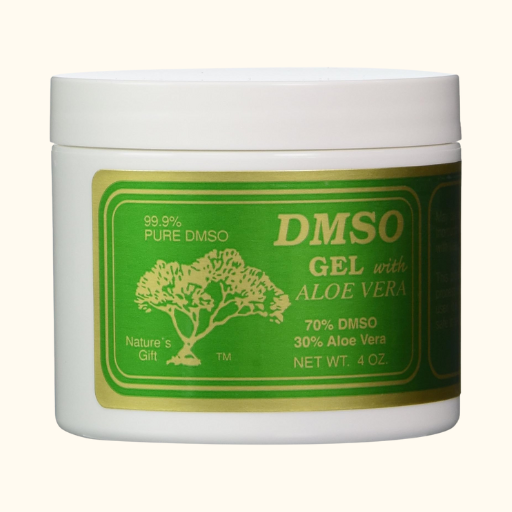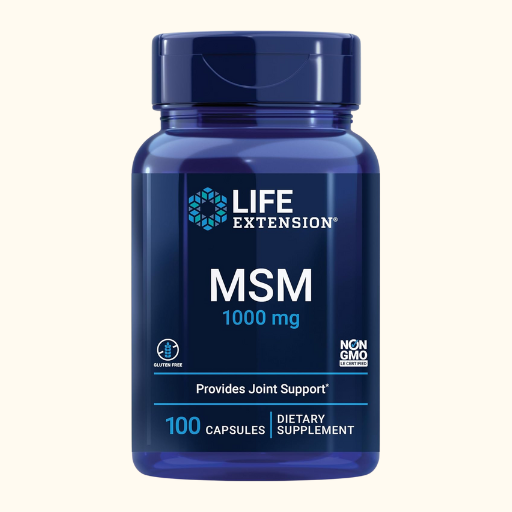
If you’re a lover of natural health remedies like me, you may have heard of a compound called DMSO, short for dimethyl sulfoxide. Some praise it as a miracle for pain and inflammation, while others shun it for its pungent smell and controversial status. Regardless of the opinions, DMSO is nothing short of fascinating.
I experienced the benefits of DMSO when I received it intravenously at a clinic where I used to work. At the time, I was dealing with persistent shoulder pain and inflammation. The results? Remarkable. DMSO significantly reduced the discomfort and swelling after just a few sessions. But I’ll be honest — the garlic odor that seemed to seep out of every pore for 24 hours afterward was a serious downside. Needless to say, no one was begging to sit next to me at dinner that night!
So, what exactly is DMSO, and why has it become so popular in functional medicine? Let’s explore.
Disclaimer: This blog is for informational purposes only and is not intended to provide medical advice. Always consult your healthcare provider before starting any new supplement or injectable therapy. FOR THE FULL PRIVACY POLICY, CLICK HERE.
What is DMSO?
DMSO (Dimethyl Sulfoxide) is a product derived from wood pulp that was first discovered in the 1800s. However, it wasn’t until the 1960s that scientists began to explore its medical potential. It’s a clear, odorless liquid that can penetrate the skin and carry other substances with it—a property that makes it incredibly unique and useful in medicine.
Originally used as an industrial solvent, researchers quickly realized that DMSO had anti-inflammatory, pain-relieving, and antioxidant properties. It’s used today in both veterinary and human medicine.
Is DMSO FDA Approved?
DMSO is FDA-approved in the United States only for one medical condition: interstitial cystitis, a chronic bladder disorder. For this treatment, DMSO is administered directly into the bladder.
Outside of this, DMSO is not FDA-approved for other human uses, which means many clinics and individuals who use it are doing so legally but off-label. Most commonly, DMSO is used in veterinary medicine to treat inflammation in horses and dogs.
In countries like Canada and some parts of Europe, DMSO is more widely accepted and prescribed for conditions like arthritis, post-surgical recovery, and scleroderma.
Routes of Administration
DMSO can be administered in several ways:
- Topical – Applied to the skin, often over joints and muscles.
- Oral – Consumed in diluted form; used less commonly due to taste and potential toxicity concerns.
- Intravenous (IV) – Used under clinical supervision for systemic effects.
- Intravesical – Instilled directly into the bladder (the FDA-approved use).
- Transdermal Carrier – Applied with other substances to carry them through the skin.
Its ability to cross membranes allows it to carry medications, nutrients, and, unfortunately, contaminants—so clean application is critical.
Typical Dosage
There’s no standard dose of DMSO for most uses outside of interstitial cystitis. Some general guidelines include:
- Topical: 70% DMSO mixed with distilled water or aloe vera gel; apply sparingly to affected areas.
- IV use: 25–50% DMSO solution in sterile saline under medical supervision.
- Oral: 1–3 teaspoons of a diluted solution (only under professional guidance).
⚠️ Note: Improper dosing or use of non-pharmaceutical grade DMSO can lead to serious side effects.
What Are the Benefits of DMSO?

DMSO is widely used—especially in integrative and functional medicine settings—for the following:
- Pain relief (muscle, joint, and nerve-related pain)
- Inflammation reduction (especially post-injury or post-surgery)
- Increased circulation which promotes healing of wounds and burns
- Antioxidant effects that reduce free radicals and oxidative stress
- Interstitial cystitis treatment (FDA-approved)
- Adjunctive therapy in autoimmune conditions such as scleroderma and rheumatoid arthritis
- Transdermal delivery of other medications
Many athletes and biohackers also use it for muscle recovery and injury prevention.
Contraindications and Side Effects
While DMSO is powerful, it’s not for everyone. Here are some important precautions:
Contraindications:
- Pregnant or breastfeeding women
- People with liver or kidney issues
- Sulfur allergies
- Use with unknown or toxic topical substances (DMSO will carry these into your bloodstream)
Common Side Effects:
- Strong garlic-like odor on breath and skin
- Skin irritation or redness at the site of application
- Dryness or itching
- Dizziness or headaches
- Upset stomach (with oral use)
In rare cases, high doses can affect the central nervous system. Only use DMSO under medical supervision, especially IV or oral routes.
Where to Buy DMSO
DMSO is most commonly sold as a solvent for research or veterinary use, but you can find pharmaceutical-grade versions for topical use. Here are sources that I have no affiliation with:
- Amazon: Search for “99.9% pure DMSO” with “pharmaceutical grade” on the label
- DMSO.org, and Jacob Labs
- Feed and veterinary supply stores (for equine use)
Be sure to choose a clear medical-grate DMSO solution (not industrial-grade) and follow product instructions carefully.
MSM vs DMSO
Due to their similar benefits, many people take MSM for osteoarthritis or other musculoskeletal pain. MSM or methylsulfonylmethane is the oxidized form of DMSO meaning it has an extra oxygen atom attached. It is taken orally (sometimes topically) as a dietary supplement unlike DMSO which is mostly used topically or intravenously. Besides the route of administration, a key difference is that MSM does not cause a garlic-like odor after ingesting. Although there are some potential side effects such as nausea, diarrhea or headaches, MSM is generally well tolerated.
For years I’ve been taking Young Living’s Sulfurzyme supplement for hair growth. The main ingredient is MSM. It wasn’t until recently that I realized it can also help support joint health, circulation and skin & nails. It comes in capsule form or powder- which is my preference since I don’t like swallowing pills and I like the taste when added to water. I am a distributor of Young Living products, so if you’d like to support my small business, click the link to order. Use code SHAREYL to get 10% off your first order.
My Personal Experience with IV DMSO
As mentioned, I received IV DMSO therapy while working at a clinic that offered it for pain and inflammation. At the time, I was battling chronic shoulder pain that was interfering with my workouts and daily life. After just a few infusions, my pain and inflammation significantly decreased, and I had a noticeable increase in my range of motion.
But let’s talk about that garlic smell… There’s no sugarcoating it. It was strong. Even though no garlic was involved, my body excreted the DMSO metabolites through my skin and breath for a solid 24 hours post-infusion. It’s not painful but pungent — and a little socially awkward!
Still, the benefits outweighed the temporary smell, and I wouldn’t hesitate to use it again for acute inflammation.
Kelly’s Thoughts
DMSO might be one of the best-kept secrets in alternative and integrative medicine. Its anti-inflammatory and pain-relieving properties are backed by research and decades of anecdotal success.
While not a magic cure-all, DMSO is worth considering—especially for those dealing with chronic pain, soft tissue injuries, or inflammatory conditions. If you’re exploring this route, consult a knowledgeable provider (like Pulsed Ozone Cellular Therapy Solutions in Woodstock, GA), and always use high-purity DMSO for safe, effective results.
Shop this post
AS AN AMAZON ASSOCIATE, I EARN FROM QUALIFYING PURCHASES. READ MY DISCLOSER HERE. THANK YOU FOR SUPPORTING MY SMALL BUSINESS!





Pin it for later

References
- Santos NC, et al. “DMSO: a pharmacologic review.” Pharmacological Reports. 2003.
- Mayo Clinic. “Dimethyl sulfoxide (intravesical route)“
- Shing-Hwa Huang, et al. “Immunomodulatory effects and potential clinical applications of dimethyl sulfoxide.” 2020
- Brayton CF. “Dimethyl sulfoxide (DMSO): a review.” The Cornell Veterinarian. 1986.
- Jacob SW, Herschler R. “Pharmacology of DMSO.” Annals of the New York Academy of Sciences. 1975.
- Swanson BN. “Medical use of dimethyl sulfoxide (DMSO).” The Review of Contemporary Pharmacotherapy. 1985.
- Buckwalter, J A. “Pharmacological treatment of soft-tissue injuries.” The Journal of Bone & Joint Surgery. 1995.
- Maria Karim, et al. “Dimethyl sulfoxide (DMSO): a solvent that may solve selected cutaneous clinical challenges” Archives of Dermatological Research. 2023.
- NIH National Library of Medicine. Dimethyl Sulfoxide Drug Profile. PubChem
- Akifumi Toguchi, et al. “Methylsulfonylmethane Improves Knee Quality of Life in Participants with Mild Knee Pain: A Randomized, Double-Blind, Placebo-Controlled Trial”

If I didn’t have the sulfur allergy I would be all over this! Thank you for all the information you provide and not just giving click bait. Appreciate you!
I’ve never heard of this before. Love all the info, thank you!
So interesting, I have never heard of this before!